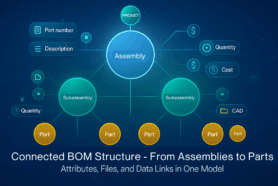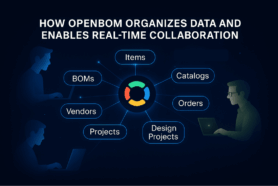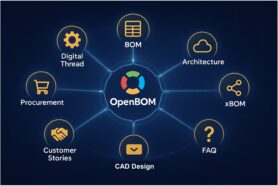
OpenBOM is designed to help you organize your work efficiently within a team, which serves as the basic organizational unit in the platform. When you start working with OpenBOM, you create a team, allowing you to seamlessly share data and coordinate activities. Additionally, OpenBOM enables data sharing across multiple organizations, such as suppliers and contractors, who can independently collaborate while using OpenBOM. This flexibility ensures that your product data management is as effective as possible, whether within your organization or across external partnerships.
Basic Workflow to Organize the Team
To set up your team in OpenBOM and begin collaborating, follow these simple steps:
Register the First User
The first user to register will automatically become the team admin. This role comes with the ability to manage team settings, users, and permissions.
Add Team Members
As the admin, you can invite additional team members to join your team.
Each user can be assigned a specific access level based on their role: Read: View-only access to data. Edit: Permission to make changes to data. By View: Customized access to specific user-defined views. No Access: A user with custom granular access (share individual catalogs, projects, BOMs, etc to access certain data).
Watch the video
Create Data Model Elements
Set up your data management environment by creating essential elements such as property types, catalogs, views, and templates. These tools allow you to standardize and streamline how your team manages product data.
Multiple Teams and Data Sharing
OpenBOM supports collaboration between multiple teams, providing a robust framework for data sharing while maintaining security and role segregation. However, users cannot belong to multiple teams simultaneously. Here’s what to do if a team member already has a separate OpenBOM account:
NOTE: If one of your team members has an existing account (e.g., from a previous organization or independent work), contact OpenBOM Support. Our team will assist in reconciling the account to ensure the user can join your team seamlessly.
This policy ensures clean data management and avoids conflicts arising from users being part of multiple teams.
Conclusion
OpenBOM’s multi-tenant architecture empowers organizations to effectively manage teams and share data across organizational boundaries. The basic process involves registering the first user (who becomes the admin) and then adding team members to build a collaborative environment. By following these steps, you can ensure a smooth and efficient setup for your team.
REGISTER FOR FREE today and explore how OpenBOM can transform your product data management workflow.
Best, Oleg
Join our newsletter to receive a weekly portion of news, articles, and tips about OpenBOM and our community.










